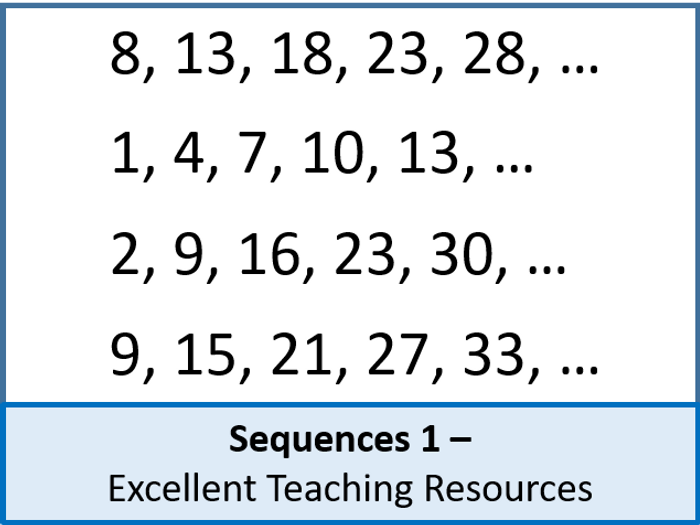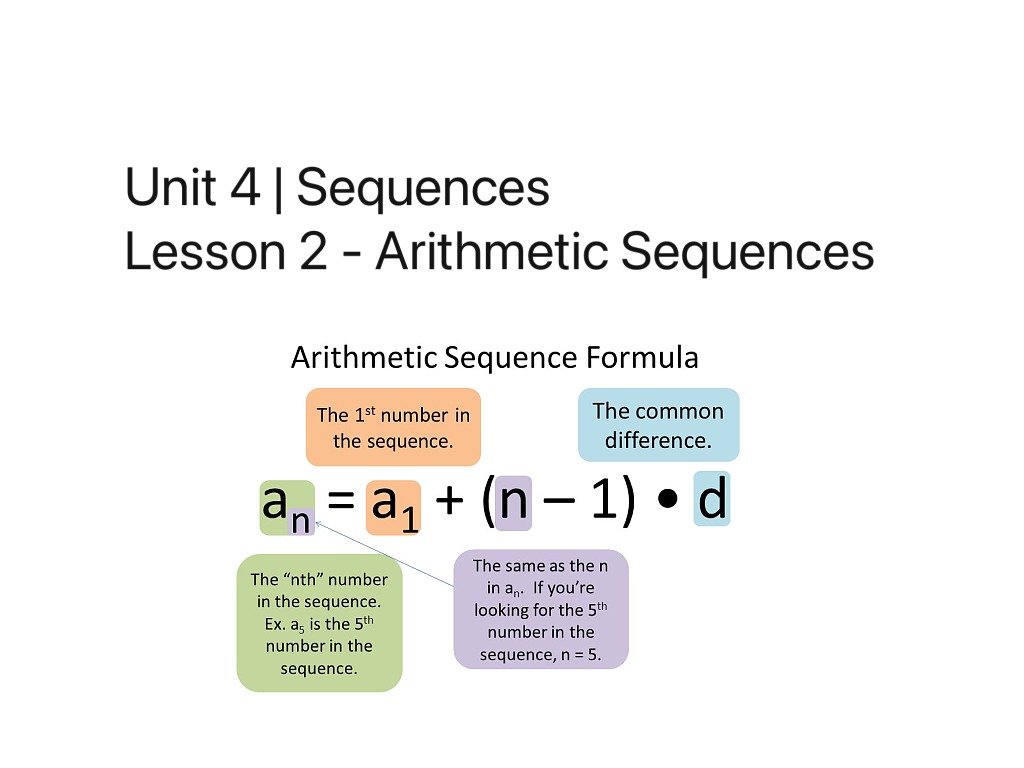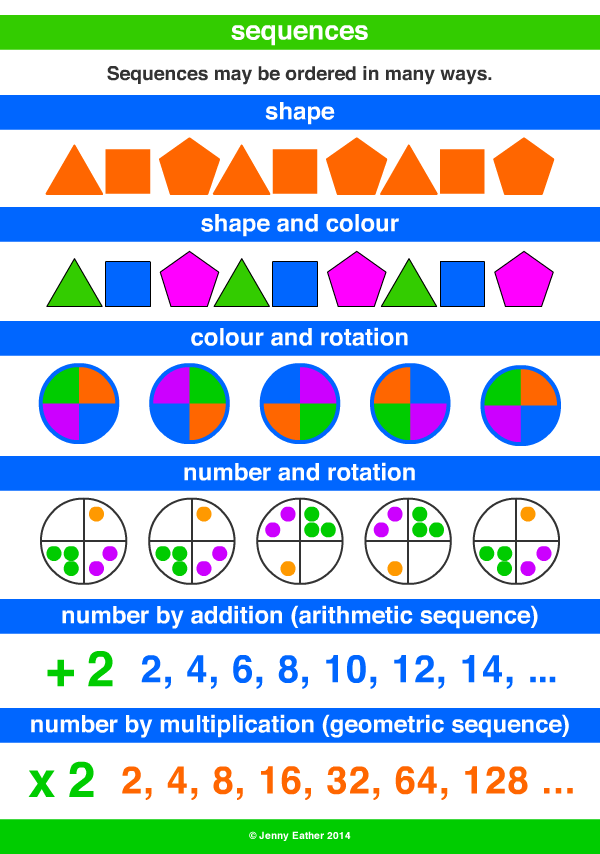

They mainly talk about arithmetic and geometric sequences. The sequence formulas are about finding the n th term and the sum of 'n' terms of a sequence. n th term of arithmetic sequence (implicit formula) is, \(a_n\) = \(a_\) = 1 (-3) 15 - 1 = (-3) 14 = 4,782,969Īnswer: The 15 th term of the given geometric sequence = 4,782,969.įAQs on Sequence Formula What Are Sequence Formulas?.n th term of arithmetic sequence (explicit formula) is, \(a_n\) = a + (n - 1) d.Here are the formulas related to the arithmetic sequence. where the first term is 'a' and the common difference is 'd'. Let us consider the arithmetic sequence a, a + d, a + 2d. Here are the sequence formulas which will in detail be explained below the list of formulas. The sequence formulas include the formulas of finding the n th term and the sum of the first n terms of each of the arithmetic sequence and geometric sequence.

Let us learn the sequence formulas in detail along with a few solved examples here. A geometric sequence is a sequence in which the ratio of every two consecutive terms is constant. An arithmetic sequence is a sequence in which the difference between every two consecutive terms is constant. We have two types of sequence formulas, arithmetic sequence formulas, and geometric sequence formulas. Textbook content produced by OpenStax is licensed under a Creative Commons Attribution License. Use the information below to generate a citation. Then you must include on every digital page view the following attribution: If you are redistributing all or part of this book in a digital format, Then you must include on every physical page the following attribution: If you are redistributing all or part of this book in a print format, Want to cite, share, or modify this book? This book uses the Round to the nearest thousandth when necessary. Use the right arrow key to scroll through the list of terms.įor the following exercises, use the steps above to find the indicated terms for the sequence. Press to see the list of terms for the finite sequence defined.See the instructions above for the description of each item. Enter the items in the order “Expr”, “Variable”, “start”, “end” separated by commas.Use the right arrow key to scroll through the list of terms. Press to see the list of terms for the finite sequence defined. You will see the sequence syntax on the screen. Press 3 times to return to the home screen.In the line headed “end:” key in the value of n n that ends the sequence.In the line headed “start:” key in the value of n n that begins the sequence.In the line headed “Variable:” type in the variable used on the previous step.In the line headed “Expr:” type in the explicit formula, using the button for n n.Scroll over to OPS and choose “seq(” from the dropdown list.For example, suppose we know the following:įind the tenth term of the sequence a 1 = 2 a 1 = 2, a n = n a n − 1 a n = n a n − 1įollow these steps to evaluate a finite sequence defined by an explicit formula. Instead, we describe the sequence using a recursive formula, a formula that defines the terms of a sequence using previous terms.Ī recursive formula always has two parts: the value of an initial term (or terms), and an equation defining a n a n in terms of preceding terms. The Fibonacci sequence cannot easily be written using an explicit formula. Other examples from the natural world that exhibit the Fibonacci sequence are the Calla Lily, which has just one petal, the Black-Eyed Susan with 13 petals, and different varieties of daisies that may have 21 or 34 petals.Įach term of the Fibonacci sequence depends on the terms that come before it. Their growth follows the Fibonacci sequence, a famous sequence in which each term can be found by adding the preceding two terms. We may see the sequence in the leaf or branch arrangement, the number of petals of a flower, or the pattern of the chambers in a nautilus shell.

Sequences occur naturally in the growth patterns of nautilus shells, pinecones, tree branches, and many other natural structures. Writing the Terms of a Sequence Defined by a Recursive Formula


 0 kommentar(er)
0 kommentar(er)
